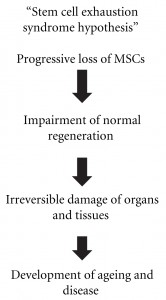Stem Cell Therapy…Real Treatment, Real Hope!
“I had just started another round of IV Solumedrol for my multiple sclerosis (MS) on Nov. 10, 2009. I was very upset because this was my 2nd flare-up within only 5 months. I knew my MS was starting to progress more. I was scared, concerned about my 4-year old daughter and husband, concerned about my job, and worried that I would be in a wheelchair, blind, or paralyzed someday.
As I rested that evening at my parent’s house, my dad brought up the KAKE News website. He had seen a segment recently aired on KAKE about stem cell therapy treating a Wichita man with Muscular Dystrophy and treating other diseases including MS. Half-heartedly, I filled out the online application used for evaluating patients for possible treatment, but I had no real hope that I would be able to receive stem cell therapy.
“I have continued to feel good! I do not have leg pains everyday, the foggy feeling mind is gone, short-term memory is better, legs and arms are stronger, my chronic fatigue has lessened dramatically, depression has lessened, and I feel almost ‘normal’ again!!”
To my great surprise, I received a phone call from Dr. Jeff Fassero only 2 days later saying I was a prime candidate for stem cell therapy!! I met the 3 main criteria for a great outcome. For stem cell therapy through the Institute for Cellular Medicine/Stem Cell Institute (ICM), I would have to travel to San Jose, Costa Rica. ICM uses stem cell therapy to treat many autoimmune diseases, heart failure, autism, osteoarthritis, rheumatoid arthritis, cerebral palsy, diabetes, spinal cord injury, degenerative joint disease, critical limb ischemia, and other conditions. ICM was founded and largely financed personally by Dr. Neil H. Riordan, a native of Wichita, KS. He is the department head of the stem cell culture lab at ICM, and he founded a supplement company in Arizona called Aidan Products. As I researched stem cell therapy and Dr. Riordan, I discovered numerous medical articles written by him that have been published in many scientific and medical journals including treating cancer with IV vitamin C.
On February 1, 2010, I was at my first appointment. I could hardly believe that I was actually in Costa Rica at ICM! The caring medical team was friendly, professional, and helped ease some of my anxieties. My treatment session was for 2 weeks and included physical therapy 2 hours a day, blood work, a pre-op exam, consultation with a surgeon, surgery to extract my own fat-derived stem cells, 2 IV infusions of my fat-derived stem cells, and 5 injections of umbilical cord stem cells into my spinal column. Treatment was not easy at times. But, I was hopeful and excited about the prospect of having a “normal” life again!
I was very gratified that I felt better as quickly as I did. I was hoping that I was not feeling better only because I was in a different country and away from my daily routine. Fortunately, I have continued to feel good! I do not have leg pains everyday, the foggy feeling mind is gone, short-term memory is better, legs and arms are stronger, my chronic fatigue has lessened dramatically, depression has lessened, and I feel almost “normal” again!! I had not had any hope that I would EVER feel this good again! Hope…hope is a wonderful thing!”
– M.L.B







